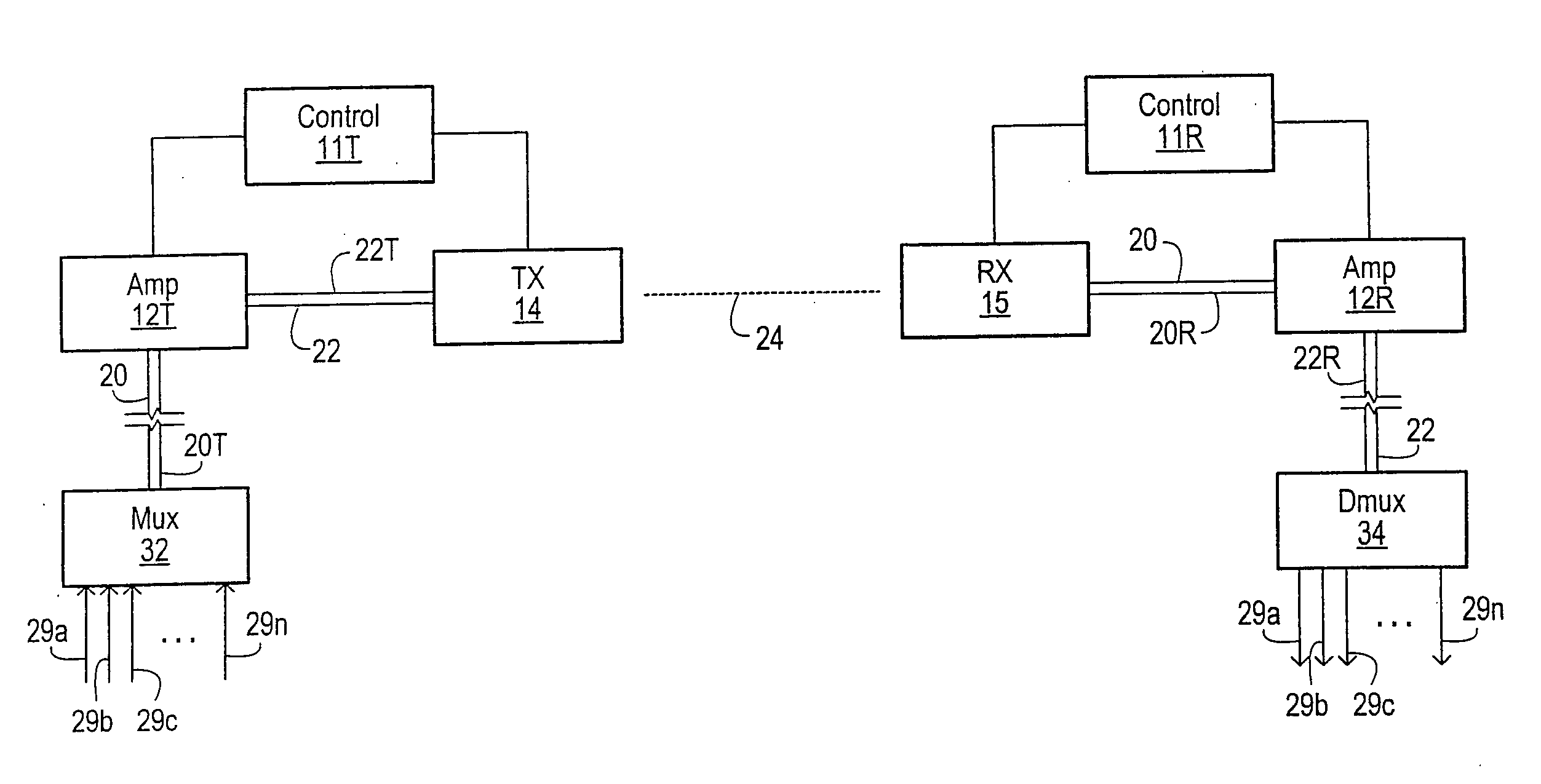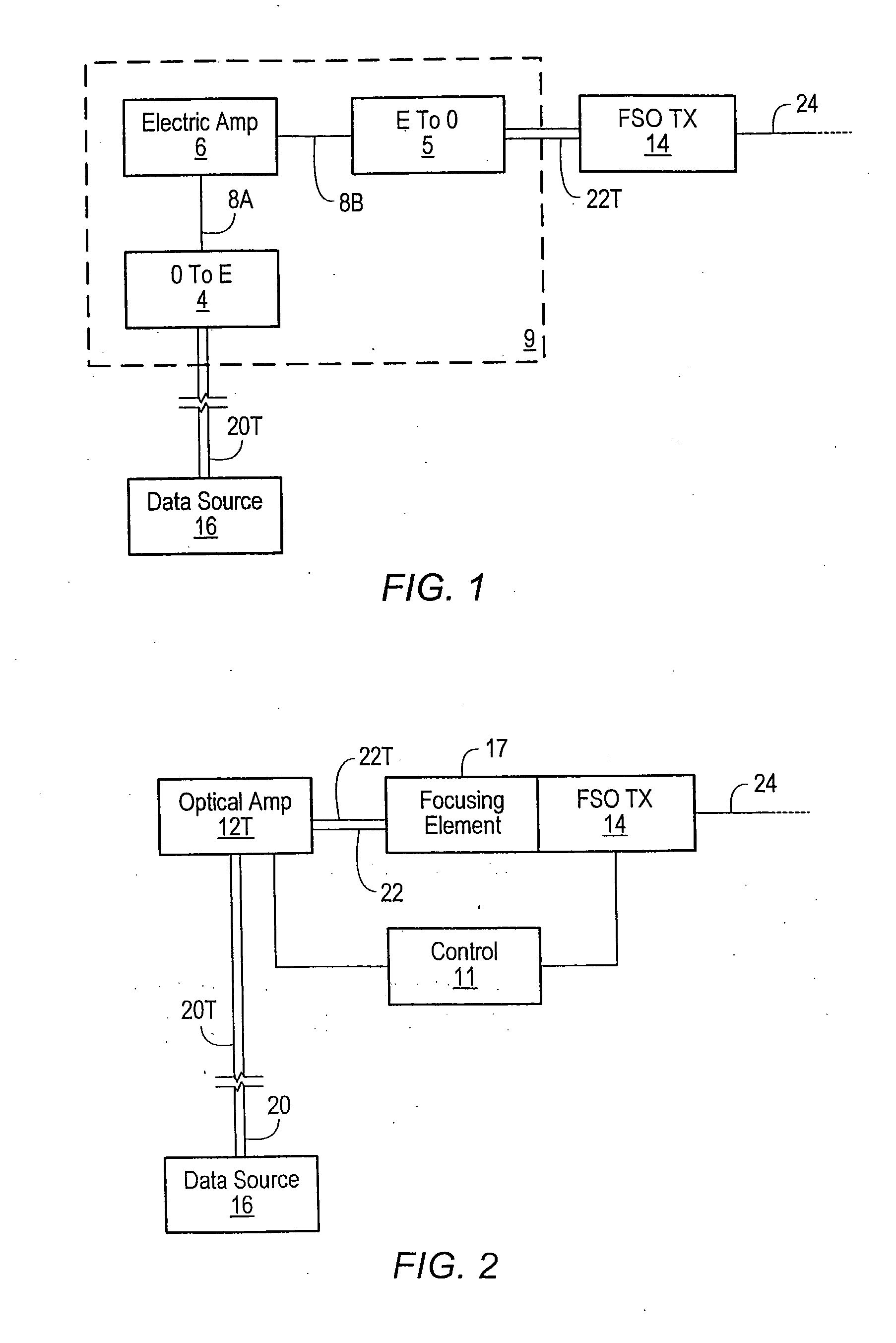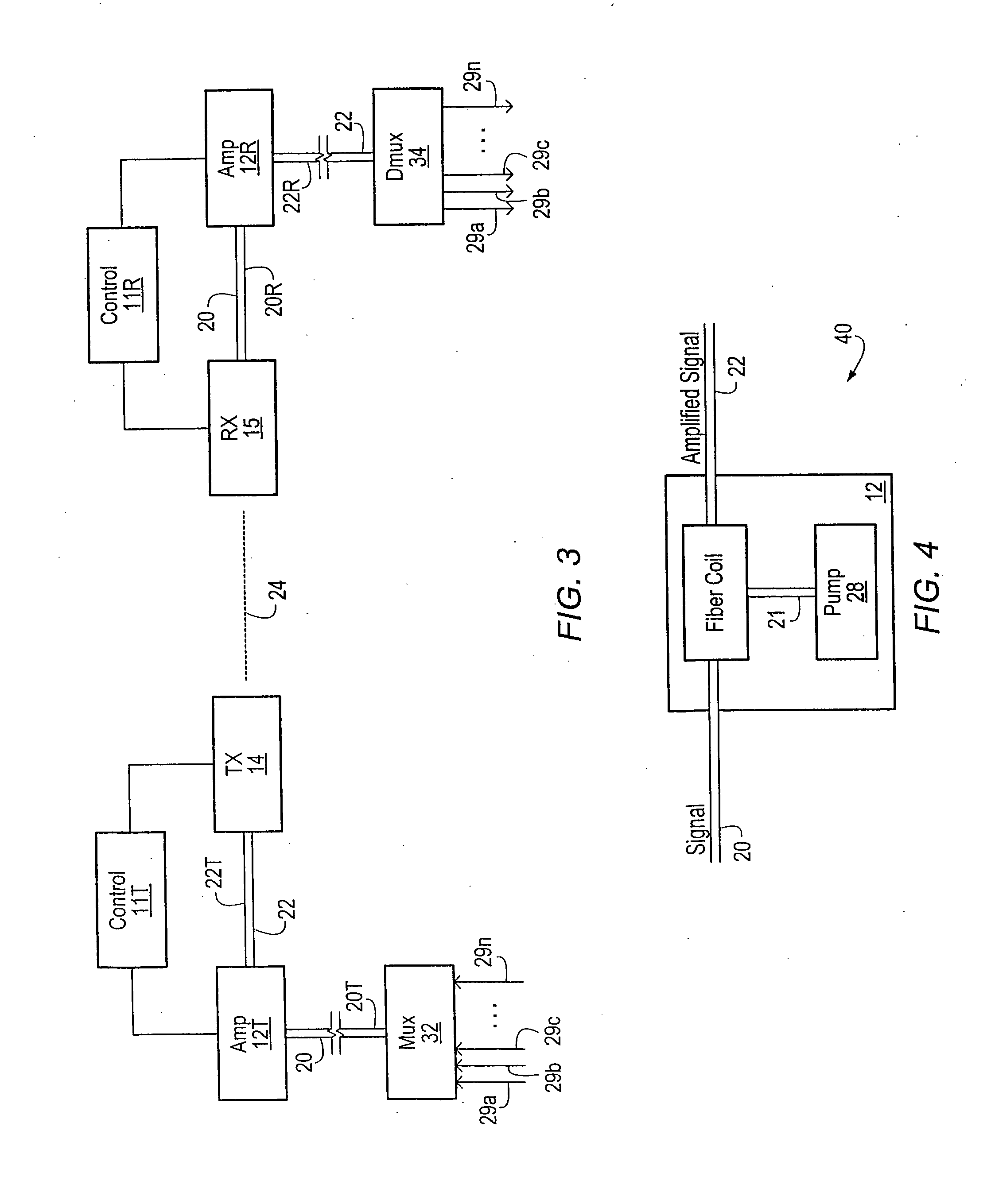Optical amplifiers in a free space laser communication system
a laser communication system and optical amplifier technology, applied in line-of-sight transmission, electromagnetic transmission, electrical equipment, etc., can solve the problems of inability to communicate data at fiber optic speeds, inability to achieve high cost of e-o and o-e conversion, so as to reduce the diameter of attenuated optical signals and reduce the diameter of amplified attenuated optical signals
- Summary
- Abstract
- Description
- Claims
- Application Information
AI Technical Summary
Benefits of technology
Problems solved by technology
Method used
Image
Examples
Embodiment Construction
[0032] The following presents a detailed description of embodiments of the invention. However, the invention can be embodied in a multitude of different ways as defined and covered by the claims. The invention is more general than the embodiments that are explicitly described, and is not limited by the specific embodiments but rather is defined by the appended claims.
[0033]FIG. 2 is a block diagram illustrating a transmitter portion of a FSO system. Data source 16 represents the optical transmission point where the data is transmitted on to a fiber optic line. Data source 16 may include a router, switching node, server, or even an individual PC with an optical modem. As the optical signal 20T, from data source 16, is transmitted across a long-haul network, the optical signal encounters some signal attenuation, interference, scattering, and reflections. After some distance the optical signal may be too weak to accurately transmit into free space. Therefore, the optical signal must b...
PUM
 Login to view more
Login to view more Abstract
Description
Claims
Application Information
 Login to view more
Login to view more - R&D Engineer
- R&D Manager
- IP Professional
- Industry Leading Data Capabilities
- Powerful AI technology
- Patent DNA Extraction
Browse by: Latest US Patents, China's latest patents, Technical Efficacy Thesaurus, Application Domain, Technology Topic.
© 2024 PatSnap. All rights reserved.Legal|Privacy policy|Modern Slavery Act Transparency Statement|Sitemap



